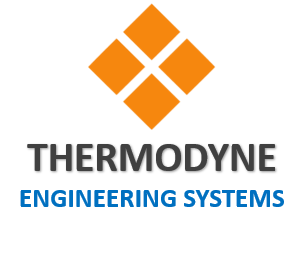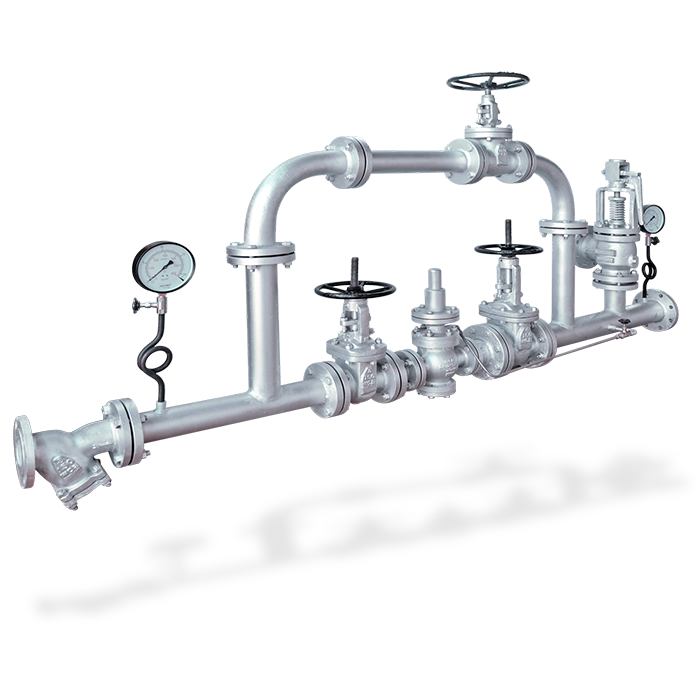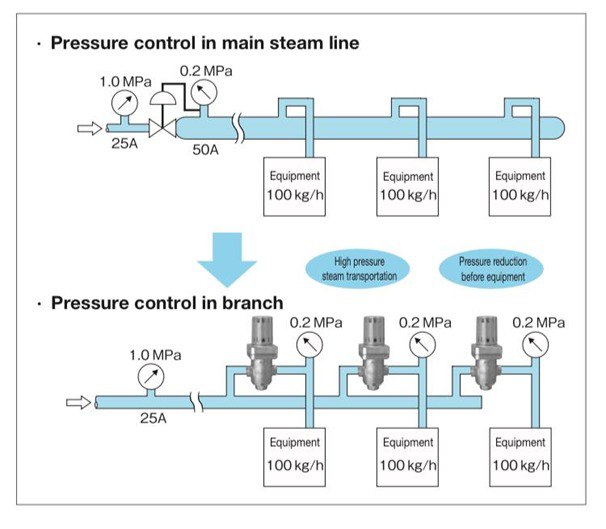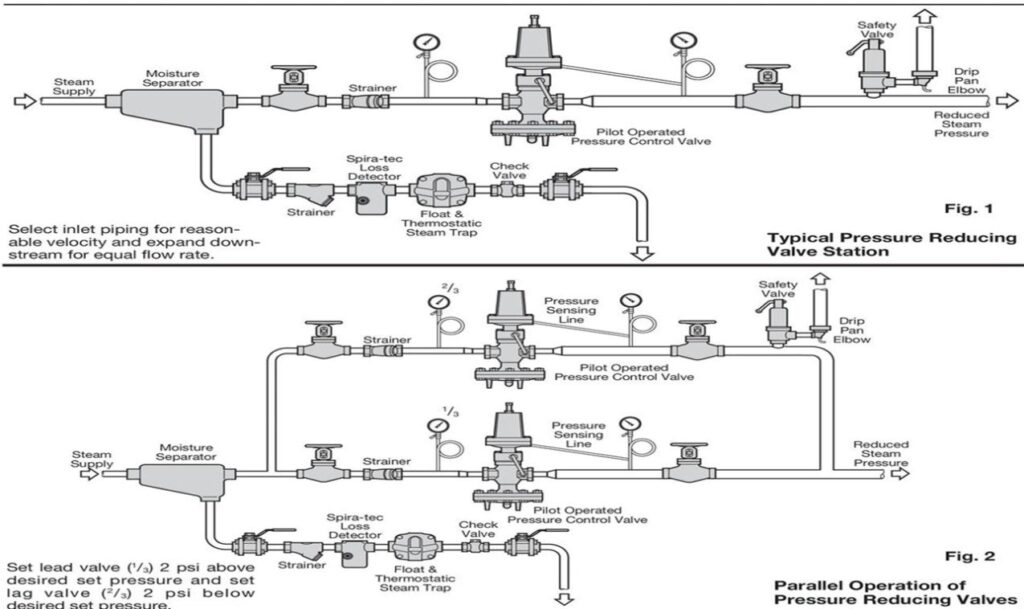A pressure reducing station (PRS) is a crucial component in industrial boiler systems, responsible for regulating and reducing steam pressure to a safe and usable level before it enters the boiler. This critical function ensures optimal boiler performance, safety, and efficiency.
Key Functions of a PRS in Industrial Boilers
- Precise Pressure Regulation: The PRS maintains steam pressure within the boiler’s safe operating limits, preventing excessive pressure that could damage the boiler or associated equipment.
- Enhanced Safety: By controlling steam pressure, the PRS minimizes the risk of pressure-related accidents, protecting personnel and equipment.
- Optimized Efficiency: The PRS ensures that downstream processes receive steam at the appropriate pressure level, maximizing energy utilization and reducing wasted steam.
Components of a PRS
- Pressure Regulator Valve: The heart of the PRS, the pressure regulator valve controls the flow of steam and precisely reduces its pressure.
- Strainer: Removes impurities and contaminants from the steam, protecting the pressure regulator valve and downstream equipment.
- Pressure Gauge: Continuously monitors steam pressure, providing real-time feedback on the PRS’s performance.
Benefits of a PRS in Industrial Boilers
- Reduced Boiler Maintenance: By preventing excessive pressure, the PRS minimizes wear and tear on the boiler, extending its lifespan and reducing maintenance costs.
- Improved Process Control: Consistent steam pressure ensures stable and efficient operation of downstream processes, enhancing overall production quality.
- Environmental Impact Mitigation: Optimized steam utilization reduces energy consumption and associated environmental emissions.
Thermodyne Boilers: A Leading PRS Provider
Opens in a new windowwww.thermodyneboilers.com
Thermodyne Boilers logo
Thermodyne Boilers is a renowned manufacturer of industrial boilers, including pressure reducing stations. They recognize the critical role of PRS systems in ensuring boiler safety, efficiency, and environmental compliance.
Their PRS solutions offer:
- Flexibility: Cater to a wide range of steam pressure requirements and applications.
- Reliability: Constructed with high-quality materials and components for long-lasting performance.
- Expertise: Thermodyne’s team of engineers provides comprehensive support and guidance in selecting and implementing the optimal PRS solution.
Conclusion
A pressure reducing station is an indispensable component in industrial boiler systems, ensuring safe, efficient, and environmentally responsible steam utilization. By precisely regulating steam pressure, PRS systems protect boilers, enhance process control, and contribute to overall production efficiency and sustainability.
A Cost saving Arrangement for your Steam Processing Operation
Have you ever thought about why a technical consultant suggests buying
a high-pressure boiler? It then reduces the pressure by using the
pressure reduction valve (PRV) to the required level as per the process
requirement. In general observation, it seems like a cost
increasing step since you need to buy an extra device (Pressure
Reduction System) and other extra fittings to install in the steam line.
But it is not so!
Let’s dig a little deeper, whether using a PRS is practically feasible or not.
Steam generation at high pressure helps you to reduce the initial investment cost since at high pressure the specific volume
of steam is lower than that at low pressure, which requires a small diameter pipe to carry the steam and reduces the cost associated
with the pipe , which leads to a reduction in the initial investment cost. The high-pressure steam generation allows
relatively less carryover and provides better-quality steam, as at low pressure, carryover is more likely to occur. Using a high-pressure
boiler allows you to use the steam in different applications at different pressures by using the PRV. It also provides the
flexibility for variable
A sudden increase in load reduces the boiler pressure and increases the carry over and moisture content in the steam.
The PRV eliminates this and allows constant pressure to be maintained in the boiler. Furthermore, generating steam at high pressure
is relatively cheaper than using the low-pressure boiler, so it reduces fuel consumption.
Now we have a brief idea of what benefits PRS serves. Any porous plug or orifice valve which reduces the cross-section area across the flow,
works as a pressure reducer, but during the fluctuating loading, the outlet pressure of the valve will also fluctuate, which is not desirable,
so to eliminate the above issue, we use the PRV, which provides a constant pressure during the variable loading also.
How does a pressure reducing system work?
A pressure reducing system, achieved through a pressure reducing valve, helps to lower the inlet pressure to a desired and consistent outlet pressure. When the inlet pressure exceeds the desired outlet pressure, the valve opens to release the excess pressure. Conversely, when the inlet pressure drops below the desired outlet pressure, the valve closes partially or fully to restrict the flow and maintain the set pressure. This system ensures that downstream equipment or processes operate within safe and desired pressure ranges. The pressure reducing valve consists of a diaphragm or piston, a spring, and an adjustable setpoint to regulate the valve opening and pressure levels.
Let’s look more closely at what the technical data suggests:
A pressure reducing valve is a regulating valve that maintains the steam pressure at the
outlet at a certain fixed, prescribed level that is lower than the inlet pressure. The PRV
not only reduces the pressure but also controls the flow by load fluctuation
dynamically. Therefore, using the change of state of steam caused by adiabatic steam expansion, not
only the pressure changes but the temperature, specific volume, and latent heat also change.
Effects caused by PRS:
1. Quality improved of steam: Pressure reduction is the use of adiabatic steam
expansion. Since the latent heat of steam changes as pressure changes, dryness
fraction increases.
For example: if the saturated steam at pressure is 10 kg/cm2 with a 95% dryness
fraction is reduced to 3 kg/cm2.
Enthalpy of steam at inlet of PRS = 181.2 + 0.95*481.8 = 638.91 kcal/kg
And the dryness fraction at the outlet,
= (638.91-133.4)/516.9 = 0.977
= 97.7%
Now we can see a 2.7% increment in the dryness fraction. which simply means less
condensate will form inside the pipe and more steam will reach the process.
- Reduction in piping cost. : As mentioned above, the PRV allows the
generation of steam at high pressure, and at high pressure the density of steam is
high, which requires less space, so high pressure steam can be carried in a small
diameter pipe as compared to low pressure steam.
Considering the above example,
The density of steam at 10 kg/cm2 = 5.049 kg/m3
Velocity of steam in pipe = 30 m/s
Capacity of boiler = 2000 kg/hr
Then, the pipe required to carry the high pressure (10 kg/cm2) steam at a rate of
2000 kg/hr is,
Steam capacity (kg/s) = density * area velocity 2000/3600 = 5.0490.785*D2 * 30
Inner diameter D = 68.38 mm.
And pipe required to carry the low pressure (3 kg/cm2) steam at the rate of 2000
kg/hr is,
The density of steam = 1.622 kg/m3
Velocity of steam = 30 m/s
2000/3600 = 1.6220.785D2 *30
D = 120.4 mm
So, by using the PRV before the process, a large piping coat can be saved since a lower
diameter pipe will be required.
3. Reduced Carry Over: Low pressure boilers are more prone to carryover. The PRS
reduces the boiler carry over by allowing us to generate the steam at high pressure
and ensure the contaminants free steam reaches the process. Since carry over
reduces the life of the valves, strainers, and pipes, so PRS also improves the life of
the system indirectly.
- Even heating conditions: PRV keeps the outlet pressure constant and stabilizes
the heating conditions, which ensures uniform productivity by maintaining the
constant temperature.
- Single boiler for different applications: with the help of PRV, a single boiler of
high pressure can be used for different applications at different pressures.
For example, if a steam process unit has three different operations in which
steam is required at 5 kg/cm2 pressure, 6 kg/cm2, and 4 kg/cm2 with a
capacity of 2 TPH, then in this case, instead of three different boilers, you
can choose a single boiler of 6 TPH capacity and pressure greater than 6
kg/cm2.
Precautions During PRV Installation: It is also important for you to know whether the
installation of PRV is appropriate or not. Since an improper location of PRV may cause you
losses and would not have any benefits. Some of the basic factors you should take into
consideration are as follows:
A PRS should be installed just before the process and
not in the main steam line.
For larger pressure reduction, a combination of PRS should be used
for the best and most controlled operation.
Have No Idea Where to start with?
We at THERMODYNE ENGINEERING SYSTEMS provide the most energy efficient steam energy solutions which are best suited to your process. Our team of experts is always at a phone call distance to help you make your process energy efficient and reduce the steam energy loss by optimising the operation. Contact Us to increase your boiler system efficiency and reduce the operating cost.
Steam Pressure Reduction System (PRS) FAQ
A PRS system, or pressure reducing station, is a device that is used to reduce the pressure of steam from a boiler to a lower pressure that is required by the process equipment. PRS systems are typically made up of a pressure regulator valve, a strainer, and a pressure gauge.
There are many benefits to using a PRS system, including:
Increased safety: PRS systems help to reduce the risk of steam burns and other accidents by reducing the pressure of steam.
Improved efficiency: PRS systems can help to improve the efficiency of steam systems by reducing the amount of energy that is wasted.
Reduced maintenance costs: PRS systems can help to reduce the maintenance costs of steam systems by reducing the wear and tear on equipment.
There are two main types of PRS systems: mechanical and electronic. Mechanical PRS systems use a pressure regulator valve to reduce the pressure of steam. Electronic PRS systems use a controller to monitor the steam pressure and adjust the pressure regulator valve accordingly.
A PRS system is typically installed in the steam line between the boiler and the process equipment. The PRS system should be installed in a location that is accessible for maintenance and inspection.
A PRS system should be inspected and maintained on a regular basis. The frequency of maintenance will depend on the type of PRS system and the operating conditions.
The most common problems with PRS systems are:
Clogged strainers: Clogged strainers can restrict the flow of steam and reduce the efficiency of the PRS system.
Leaking valves: Leaking valves can waste steam and reduce the efficiency of the PRS system.
Defective controllers: Defective controllers can cause the PRS system to operate incorrectly and reduce the efficiency of the PRS system.
PRS problems can be prevented by:
Regularly inspecting and maintaining the PRS system.
Using high-quality components.
Installing the PRS system in a safe and secure location.
The following safety precautions should be taken when working with PRS systems:
Always wear personal protective equipment (PPE) when working with PRS systems.
Never operate a PRS system that is leaking.
Always follow the manufacturer’s instructions when working with PRS systems.
PRS systems can have a positive environmental impact by reducing the amount of steam that is wasted. Steam that is wasted can contribute to air pollution and greenhouse gas emissions.
The future trends for PRS systems include:
Increased use of electronic PRS systems.
Development of PRS systems that are more energy efficient.
Development of PRS systems that are more environmentally friendly.



